Hoi An, a charming ancient town nestled on the central coast of Vietnam, embodies a mesmerizing fusion of Japanese, Chinese, French, and Vietnamese influences. Known as the “City of Lanterns,” Hoi An comes alive at night with its streets illuminated by countless colorful lanterns. This picturesque town is lined with well-preserved heritage buildings, quaint cafes, and tailor shops. The ultimate Hoi An travel tips from Indochinamotorcycletours.com is brimming with insights to help you capture the essence of this enchanting town and make the most of your journey!
Overview of Hoi An
Before diving into valuable Hoi An travel tips, let’s gather some basic information about this traditional old town, especially if you’re planning a motorcycle tour in Vietnam. Hoi An Ancient Town, located near the Thu Bon River in the coastal plain of Quang Nam province, is about 30 km south of Da Nang city. This historic area features many old quarters built in the 16th century that still exist today. Known as Faifo in ancient Western documents, Hoi An has been a UNESCO World Heritage site since 1999, making it a must-visit destination on your motorcycle journey through Vietnam.
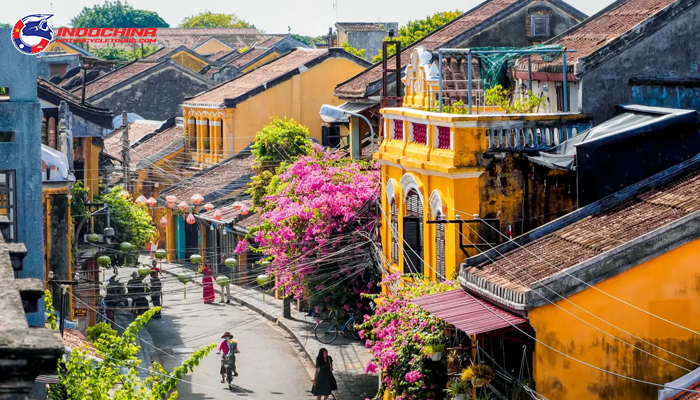
Hoi An is renowned for its traditional and peaceful vibe
Hoi An is known for its traditional and harmonious architectural beauty. Despite its historical ups and downs, Hoi An still retains its ancient and peaceful beauty in every tiled roof, brick, and row of trees, reflecting the simplicity and sincerity of the local people.
The streets in the Old Quarter are organized in a checkerboard style with short, beautiful, and winding streets embracing the houses. Walking through these beautiful and peaceful streets, motorbike visitors can enjoy delicious food and experience the daily life of Hoi An people.
How is Hoi An’s weather? When is the best time to visit Hoi An?
Central Vietnam Motorcycle Tours in Hoi An provide the perfect opportunity to experience the region’s tropical monsoon climate, which offers sunshine and warmth all year round. The area features two distinct seasons: the dry season and the rainy season, each bringing its own unique charm and adventure.
The dry season (From February to August)
The dry season, lasting from February to August, is the most popular time to visit. Expect pleasant temperatures in the mid-20s (°C) during February to April, ideal for exploring the town and surrounding areas. May to August sees hotter weather, perfect for hitting the beach or cruising the Thu Bon River. Rainfall is minimal during this dry period.
The rainy season (From September to the end of January)
The rainy season stretches from September to January. While rain is more frequent, it usually comes in short bursts followed by sunshine. This season boasts lush landscapes and fewer crowds. However, there’s a chance of typhoons, particularly in October and November.
So, when’s the best time to visit Hoi An? The best time to visit Hoi An depends on your preferences. You should consider your priorities – weather, crowds, or activities to pick the perfect time for your trip.
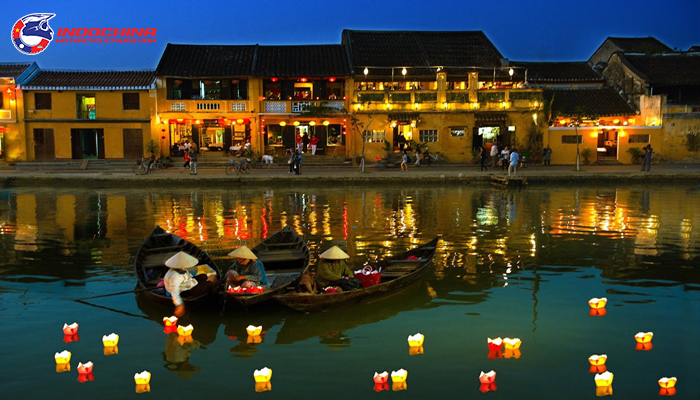
February to August is the most favored time for visits
For more Hoi An travel tips, especially about the best time to visit on your motorbike tour, check out this table summarizing the weather data for Hoi An, Vietnam by month. It includes average temperature, highest temperature, lowest temperature, rainfall probability, and rainfall size to help you plan your perfect motorbike tour in Hoi An.
| Season | Months | Temperature (°C) | Rainfall | Notes |
| Dry Season | February – April | Mid-20s | Minimal | Ideal for exploring and outdoor activities |
| Dry Season | May – August | High 20s to low 30s | Minimal | Perfect for beach and river activities |
| Rainy Season | September – January | Mid-20s | Frequent, short bursts | Lush landscapes, fewer crowds, chance of typhoons (Oct-Nov) |
The means of transportation for your Hoi An tour
There are several ways to get to and explore Hoi An, Vietnam, each offering a unique perspective on this charming town. Here’s a breakdown from useful Hoi An Travel Tips of transportation options:
Going to Hoi An, Vietnam
Hoi An doesn’t have its own airport. However, you can easily reach it from nearby Da Nang International Airport (DAD). From there, you have several options:
- Taxi: Convenient and comfortable, but can be more expensive.
- Grab: Similar to Uber, Grab is a popular ride-hailing app in Vietnam offering reasonable fares.
- Private transfer: Pre-arrange a private transfer for a smooth and stress-free journey.
- Bus: A budget-friendly option, but can be crowded and time-consuming.
Getting around in Hoi An
Once you’re in Hoi An, the town itself is quite compact and easily explored on foot. However, if you want to venture further or explore the surrounding areas, here are some options:
- Bicycle: A fun and eco-friendly way to explore the town and nearby countryside.
- Bicycle with electric assist: A good option for exploring further distances or if you’re not comfortable with a regular bicycle.
- Xích lô (cyclo): These traditional Vietnamese rickshaws offer a charming and leisurely way to get around town.
- Motorcycle taxi (xe ôm): A convenient and affordable option for shorter trips within Hoi An. Always agree on a fare beforehand.
- Motorbikes: Renting a motorbike provides flexibility and freedom to explore Hoi An and its surroundings at your own pace. However, be aware of the following:
- Traffic: Traffic can be busy, especially during peak season.
- International Driver’s License: You’ll need an international driver’s license (IDL) to rent a motorbike legally in Vietnam.
- Riding experience: If you’re not comfortable riding a motorbike in unfamiliar territory, it’s best to choose another option.

Getting around Hoi An old city on two wheels
What to do in the center of Hoi An?
Hoi An’s captivating charm lies in its UNESCO-listed Ancient Town, a maze of narrow streets lined with colorful shops, ancient houses, and historical landmarks. To fully experience the essence of this town, below’s Hoi An travel tips can be a great resource, but here are some must-do activities to get you started:
Visiting some cultural assembly halls
Hoi An is known for its unique Chinese-influenced assembly halls with red tiled roofs and dragon-carved walls, a result of the town’s popularity among Chinese traders in the 16th and 17th centuries.
- The Cantonese Assembly Hall: Built in 1885, is located in the heart of the town and is made of wood and stone. It houses many ceramic artifacts that reflect the Cantonese community culture that once dominated the town.
- The Fujian Assembly Hall: Situated at 46 Tran Phu, is the largest and most well-known traditional structure. Motorbike visitors often light large incense rings and hang paper sheets with prayers for health and fortune.
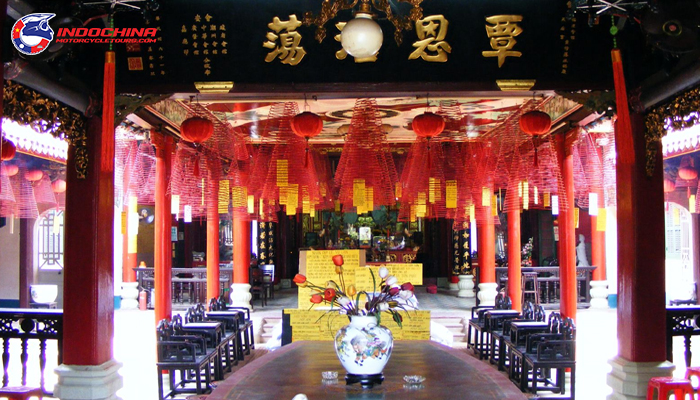
Ancient beauty in the old town
- The Trieu Chau Assembly Hall: Built in 1845 by the Chaozhou community, is dedicated to the God of Sea for safe voyages and smooth sailing. The hall is decorated with architectural motifs featuring folk legends and embossed porcelain.
Exploring the architecture of ancient houses
There are numerous ancient homes in Hoi An that are worth visiting:
- Tan Ky Ancient House: It is the most ancient house in Hoi An, over 200 years old, and was originally the home of the Le family, who were nobles. Tan Ky Ancient House still maintains its unique ancient architectural style and has ample space to display a multitude of antiques.

Tan Ky Ancient House in Hoi An is more than 200 years old
- Phung Hung Ancient House: Unlike other ancient houses, it boasts a distinct beauty with a relatively modern structural design. The house is constructed from high-quality wood, which adds a luxurious touch to its overall appearance.
Read more: Hoi An Traditional Festivals: A Tapestry of Cultural Wonders
Taking pictures at the Japanese Bridge in Hoi An
The Japanese Bridge in Hoi An is an important symbol of the ancient town that reflects its diverse cultural influences. Inside the temple, people worship Bac De Tran Vo, who is believed to protect the land and bring good fortune to the locals. This bridge is particularly special because it is featured on the 20,000 VND polymer banknote.
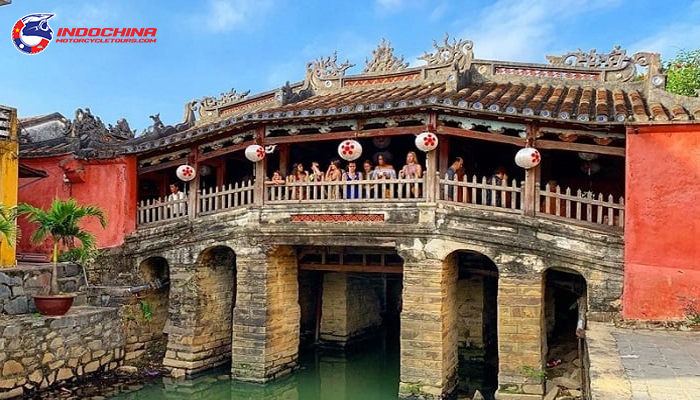
Chua Cau Hoi An is the Vietnamese – Japanese – Chinese interference architecture
Enjoying famous food at Hoi An’s Night Market
The Night Market in Hoi An is a popular spot for many motorbike visitors to Quang Nam. The market offers a lively shopping experience and a variety of unique regional dishes. Some Hoi An specialties to try here include cao lau, Quang noodle, banh mi, wonton, water fern cake, and Hoi An chicken rice.

Hoi An at night is the golden time to enjoy life
Where to visit near Hoi An Ancient Town?
To help you create the perfect itinerary, referencing these detailed Hoi An travel tips is recommended.
VinWonders Nam Hoi An
Calling all thrill-seekers! This amusement park, roughly 17 kilometers from the old town, offers a world of excitement. Explore its five unique zones, featuring exhilarating rides in the adventure land, refreshing fun at the water park, and captivating encounters with wildlife at the River Safari. VinWonders Nam Hoi An promises unforgettable experiences for you and your loved ones.
Tra Que Vegetable Village
Immerse yourself in the serenity of Tra Que Vegetable Village, a haven for nature lovers. Here, you can experience the daily life of a local farmer, indulge in a rejuvenating foot bath using Tra Que herbs, or unleash your inner chef with a cooking class. Don’t forget to tantalize your taste buds with the village’s unique and flavorful cuisine.

Tra Que Vegetable Village is an interesting destination worthy of national heritage
Cham Islands
Cham Island is a popular spot for motorbike tourists. It offers activities like scuba diving and walking underwater. The island is close to the mainland, making it perfect for a one-day visit. Snorkeling is also a popular activity here because the coral reefs are just two meters underwater.
Motorbike visitors who are interested will be taken to specific dive sites and provided with all the necessary equipment. On Cham Island, there is a small pagoda that is taken care of by an elderly couple. Visitors can experience a sense of tranquility and calm at the pagoda.
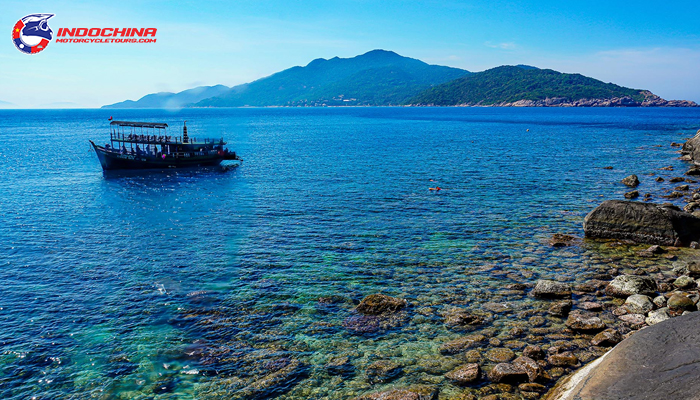
Be captivated by the beauty of “precious pearl” of Hoi An
An Bang Beach
An Bang Beach in Hoi An is a coastal paradise with its serene blue waters, expansive white sandy shores, and gentle waves lapping the beach. It remains untouched by urbanization, offering a tranquil escape from the busyness of life, allowing you to unwind and rejuvenate.
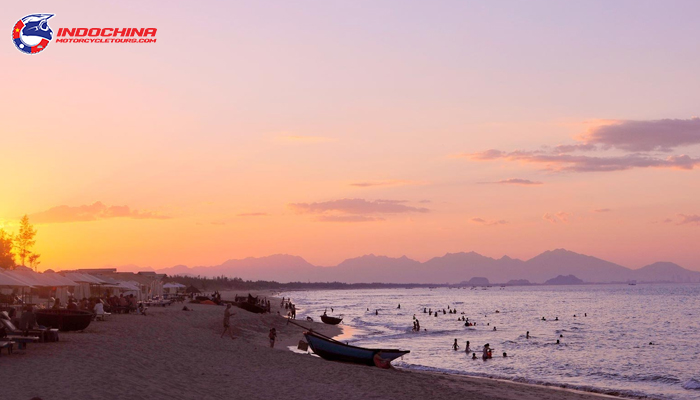
An Bang Beach is the perfect destination for beach enthusiasts in Hoi An
Where to stay during your trip to Hoi An?
Regarding Hoi An travel tips about accommodation, the homestay business here is doing well as it becomes more popular globally. Staying at a homestay in Hoi An can be an interesting experience because of the unique architecture and interiors. The price for a room stays above VND 200,000 ($8.65) per person per night throughout the year.
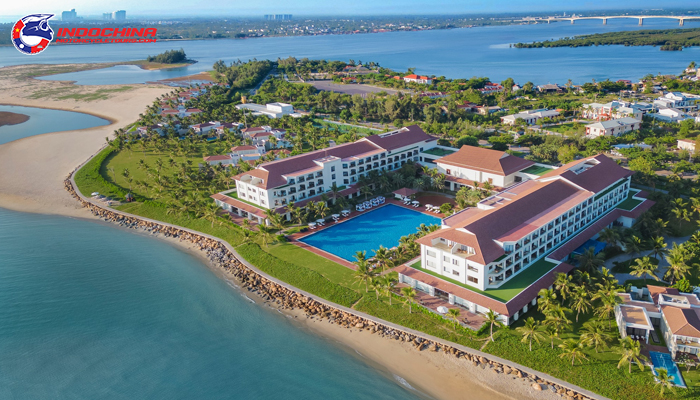
Hoi An Resort & Spa – explore the clear blue Cua Dai beach at a classy 5-star resort
Some popular homestays with affordable prices to consider are Maison de Tau, Under The Coconut Tree, An Bang Beach Hideaway, Heron House, and Le Bleu. There are also boutique hotels with designs inspired by the local yellow-walled and tiled-roof architecture. These include the Little Riverside Hoi An Luxury Hotel & Spa, La Siesta Hoi An Resort & Spa, Allegro Hoi An Luxury Hotel & Spa, and Hoi An Central Boutique Hotel.
These essential Hoi An travel tips are designed to ensure you and your companions—whether family or friends—are well-prepared for your adventure to this historic town in Vietnam’s Central region. Hoi An, with its stunning landscapes, diverse cuisine, and distinctive architecture, is a pivotal stop on the Central Motorbike Tour, especially for those joining the Indochina Adventure Tours. Contact us today to plan your unforgettable motorcycle adventure tour of a lifetime!









